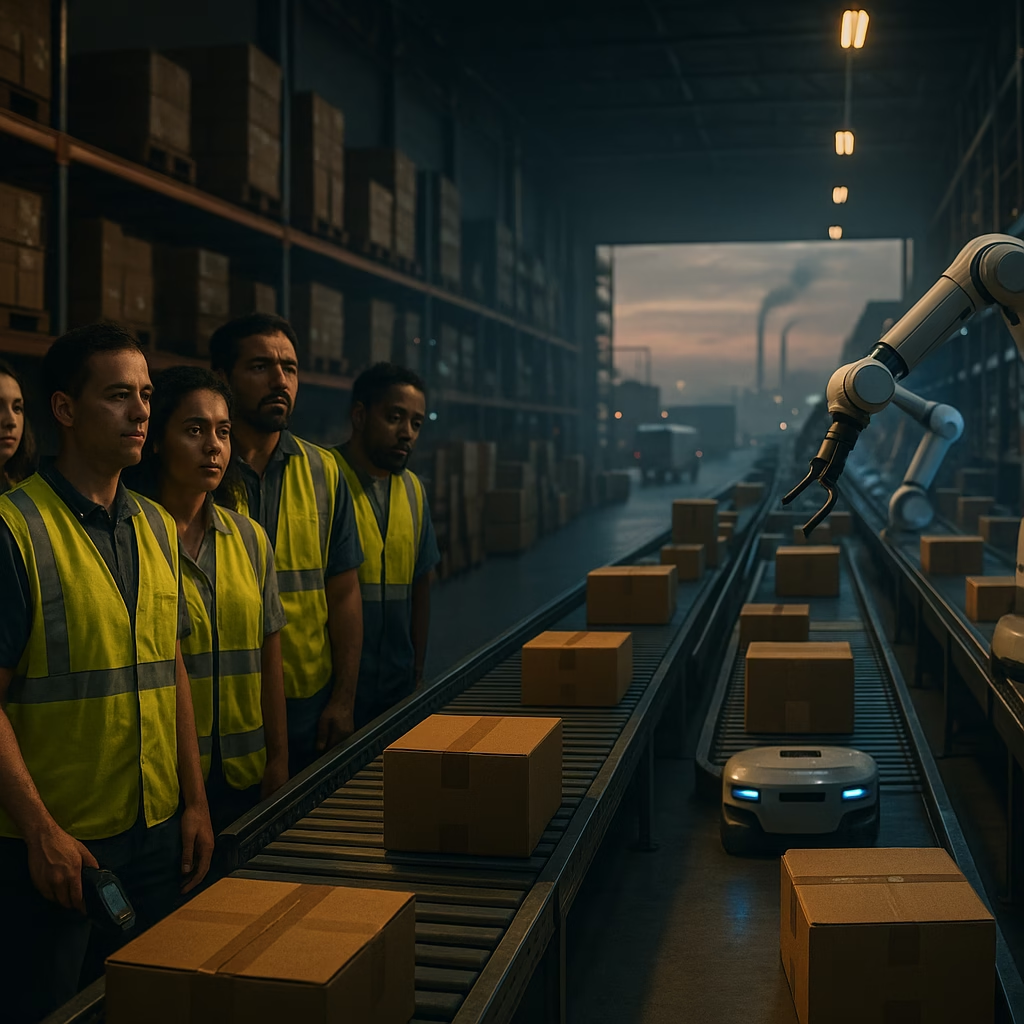Which Jobs Are Safe from AI? Skilled Trades and the Future of Work
As artificial intelligence (AI) continues reshaping industries, questions about job security and career longevity have taken center stage. While some professions face potential disruption or automation, others — particularly in the skilled trades — remain relatively insulated. Let’s explore which career paths are best positioned to weather the AI wave and why skilled trades may be among the most future-proof options available today.
AI’s Impact on the Job Market
Many industries are undergoing digital transformation, with AI stepping in to perform tasks once reserved for humans. From automating data entry to enhancing customer service through chatbots, AI is rapidly evolving. However, this technological leap isn’t affecting all sectors equally.
According to market analysts and labor economists, AI is likely to disrupt white-collar roles before it reaches many hands-on careers. That’s because AI is particularly good at tasks involving data analysis, repetition, and even content creation — elements common in desk jobs but less so in manual labor or mechanical work.
What Jobs Are Most Vulnerable?
- Administrative roles such as data entry clerks and payroll processors
- Customer service jobs that can be handled by chatbots
- Content creators working on basic blog or product descriptions
- Paralegals and legal assistants who perform research and documentation tasks
- Financial analysts who use data patterns to make projections
While some of these roles may not disappear entirely, many are expected to change dramatically or shrink in number as AI capabilities expand.
Why Skilled Trades Are Safer from AI
Unlike jobs that rely heavily on digital tasks, skilled trades often require real-world, physical interaction with machines, environments, and people. More importantly, they demand fine motor skills, adaptability to unique job sites, and often rely on years of practical, hands-on experience — things AI doesn’t currently replicate well.
Key Reasons Skilled Trades Are AI-Resistant
- Physical presence: Many trade jobs require being on-site to inspect, build, or repair — a major barrier for automation.
- Custom problem-solving: No two plumbing or electrical issues are the same, and tradespeople must navigate complex, unpredictable scenarios.
- Dexterity and manual skill: Tasks involving precise movements or tool handling are still difficult for robots.
- Human judgment: Safety decisions and on-the-spot judgments made by experienced tradespeople are not easily programmable.
Examples of Protected Skilled Trades
The following occupations are currently considered the least likely to be disrupted by AI:
- Electricians
- Plumbers
- HVAC (Heating, Ventilation, and Air Conditioning) technicians
- Construction workers, especially those with specialized training
- Welders
- Auto mechanics
These roles are not only stable but also in high demand as the current skilled labor workforce ages and younger generations pursue white-collar paths.
Skilled Trades: A Golden Opportunity
With AI taking over more traditional office roles, skilled trades are gaining new attention as rewarding and secure career choices. Apprenticeships, vocational schools, and certification programs can lead to steady work without the need for a traditional four-year college degree.
Advantages of Pursuing Skilled Trades
- Job Security: High demand and low automation risk make for a stable career path.
- Competitive Salaries: Many trades offer income that rivals or exceeds office jobs.
- Quicker Path to Employment: Programs often take 1–2 years versus 4+ years in college.
- Hands-On Learning: Ideal for people who prefer doing over theorizing.
In addition, many states and localities are launching initiatives to encourage more people to enter trade professions, offering scholarships, incentives, and job placement assistance.
AI Is a Tool, Not a Replacement — Yet
While AI can assist in many areas — even in skilled trades — it’s unlikely to fully replace human tradespeople anytime soon. For example, electricians might use AI-driven design software to plan circuits, or mechanics might rely on AI diagnostics. But these are tools, not substitutes for experience and human intuition.
As noted in industry reports, automation often complements human labor rather than replacing it. The key is adaptability — learning how to work alongside machines to improve job efficiency rather than resisting technological change altogether.
Emerging “Tech-Infused” Trade Jobs
A new category of hybrid roles is also surfacing, blending traditional trades with tech skills. These include:
- Smart Home Installers who set up automated lighting, security, and climate systems
- Electric Vehicle (EV) Technicians trained on both mechanics and software diagnostics
- Industrial Robot Maintenance professionals in manufacturing settings
This evolution demonstrates that trades are not technologically stagnant — they are evolving with the times while retaining their AI-resistant core.
How to Future-Proof Your Career
If you’re starting out in your career or considering a switch, now may be the perfect time to explore skilled trade options. Here are a few steps to take:
1. Research Trade Programs in Your Area
Community colleges, vocational schools, and union-led apprenticeships are excellent entry points.
2. Look for Growth Industries
Fields like renewable energy, advanced manufacturing, and green construction are all seeking skilled talent.
3. Combine Tech Skills with Trade Expertise
Gaining knowledge in digital tools and software can make you even more invaluable in a hands-on profession.
Conclusion: Embrace A Future Where Trades Thrive
As AI continues its march into the professional world, skilled trades remain a bastion of human expertise, judgment, and adaptability. These jobs offer not only long-term stability but also the satisfaction of tangible, purpose-driven work — qualities increasingly rare in the digital age.
Whether you’re just entering the workforce or looking for a career pivot in an uncertain AI-influenced landscape, skilled trades offer a smart, secure path forward.
< lang="en">







Leave a Reply